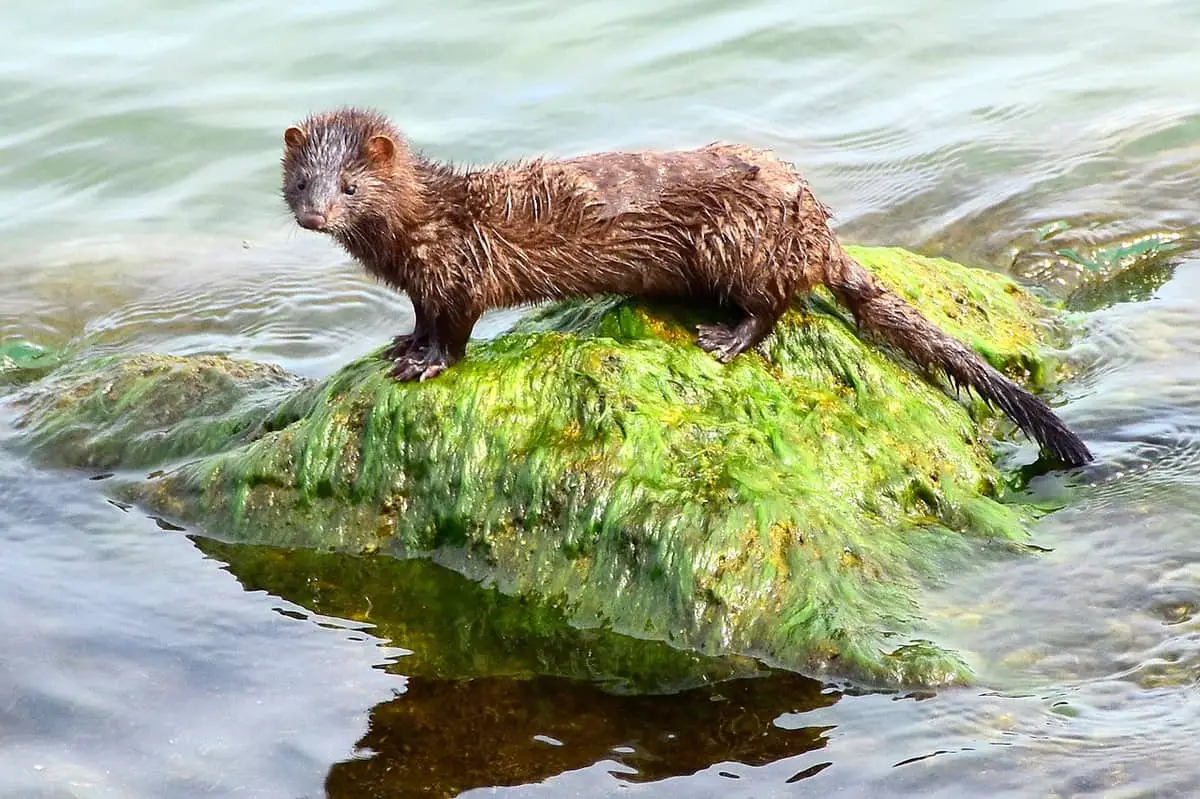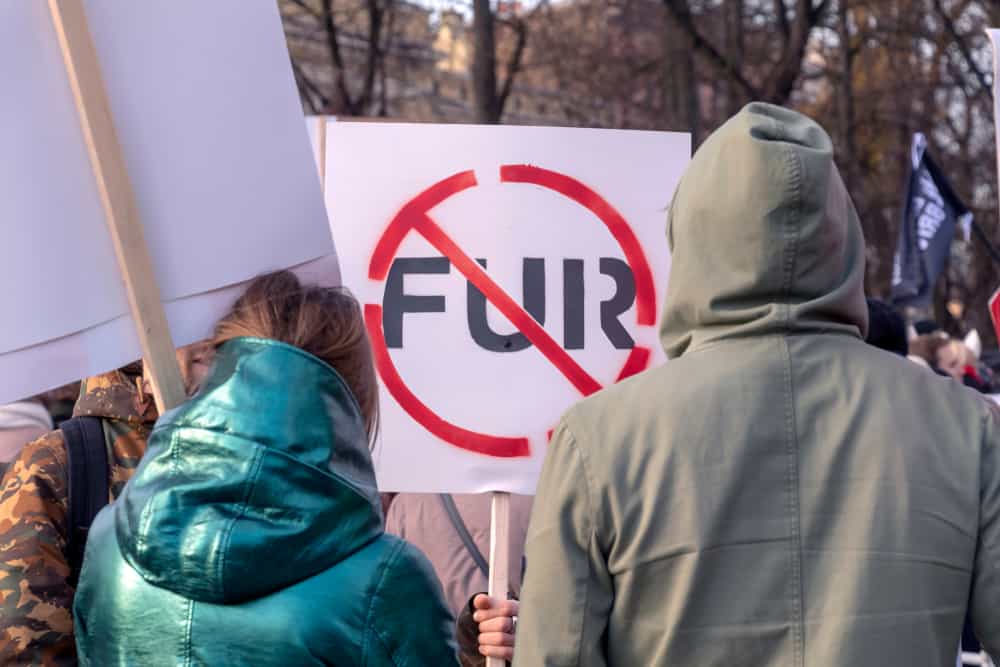If you see mink lashes, fur, and other products being sold and marketed as "100% cruelty-free," and you’re not sure whether to believe it or not – well done for checking here!
There is a lot of misinformation about whether mink products can be truly cruelty-free, and we’ll share it here.
Even though companies may advertise mink lashes and other mink products as cruelty-free, research suggests that there is inevitably some degree of cruelty involved in mink farming. At the very least, farmers keep minks in cramped cages that prevent them from thriving in their natural environment.
Cruelty to animals is not the most straightforward subject, and it always comes back to the morals and ethics we follow.
This article is going to give you all the facts about mink farming and why it is cruel, so that you can make an informed decision about how you want to prevent this form of animal cruelty.
Why is Mink Farming Cruel?
Despite each nation's regulations and welfare requirements, the ugly truth is that every mink farm keeps its mink and other fur sources confined in tiny battery cages throughout their lives.
The size of the cage varies by individual farm, region, and nation. Still, as a rule of thumb, mink are kept in cages that prevent them from being able to participate in natural activities like:
Since mink are typically loners, being forced to be in close confinement to other mink can also put them under a great deal of stress.
As a result of being caged long term, mink can demonstrate atypical mental distress behavior such as increased aggression, self-mutilation, and pacing within the cage. Other caging effects can include obesity, warped feet, reproductive failure, and killing their own offspring.
Mink farmers have defended the industry by stating that mink used to be provided larger farming habitats with water access. However, the industry put it to an end because mink were contracting diseases at increased rates.
What Are Mink and Why Are They Farmed?
Minks are dark-colored, carnivorous mammals. They are part of the same family as otters, weasels, and ferrets. Cute – right? There are two species of mink – the American Mink and the European mink. And you can find these fur balls in – yup; you guessed it – North America and Europe.
These creatures like to live close to the water because they find most of their food, like frogs and fish, by shorelines. Minks are inquisitive animals that like to dig, swim, and explore their environment. And unless it’s breeding season, you’ll probably find minks on their own as they seek a solitary lifestyle.
Minks are farmed for their beautiful dark coats. Instead of being able to show off their natural beauty, minks face a far crueler fate where they are bred to become clothing, accessories, and false eyelashes. Even their oil is used for cosmetics and medical products as well as to preserve leather.
Mink lashes have to be one of the most popular reasons why these animals are farmed, and it’s really unfortunate. Luckily, there are synthetic options that are just as good as the mink version, where no animals are harmed during production.
If you’ve been looking for an alternative, you should definitely check this out: Can Mink Lashes Be Cruelty-Free?
Mink Euthanasia Practices
Some of the controversy surrounding mink farming is whether they are euthanized humanely or not. After all, is there a humane way to euthanize animals for their fur at any point?
Typically, farmed minks are euthanized at around 7-10 months old when their first winter coat grows in and is considered to be at its prime. Here are alleged common forms of mink euthanasia:
While many countries have regulations to euthanize mink and other farmed animals as humanely as possible – animal rights activists argue that these practices still result in a painful death.
With gassing, the primary argument is that with mink being semi-aquatic, they're able to hold their breath for long periods. This means that mink are highly tolerant of low oxygen levels and suffer during the gassing euthanasia process.
There also have been accusations about mink being skinned alive, being beaten to death, or being brutally abused at various meat farms. However, the evidence of inhumane euthanasia widely varies in legitimacy based on each circumstance.
What Are We Doing to Prevent Cruelty Against Mink?
There are currently many worldwide efforts to prevent further cruelty against mink and other animals farmed for fur. We'll go over where fur farming is illegal, as well as significant organizations and efforts in place.
Countries That Have Banned Fur Farming
Several countries have banned mink and all fur farming altogether:
Whereas other countries, such as Poland, Lithuania, Sweden, Ukraine, Germany, and Switzerland, are phasing out fur farming, have strict laws against importing fur, or considering banning fur farming altogether.
Another country’s product laws that you might wonder about is China. Their practices can be different from western ideals, and it’s hard to find products that are cruelty-free.
We give you a bit of insight into how that might change this year over here: Are Cosmetics Made in China Cruelty-Free in 2021?
Differences Between the Terms Fur-Free, Cruelty-Free, and Animal Test-Free
Each of these terms distinguishes products that are without certain forms of animal mistreatments:
Term | Definition |
|---|---|
Fur-Free | A company or brand doesn't promote or sell any products with authentic animal fur. |
Cruelty-Free (PETA) | A company cannot use animal-derived ingredients to make products and must ban product testing on animals. |
Animal Test-Free (PETA) | Brands and companies must agree to the commission, pay for, permit, or conduct tests on animals, both for products and ingredients. |
Cruelty-Free Efforts and Organizations
Many organizations and efforts are in place to ensure that consumer products are animal cruelty-free, animal test-free, and fur-free. It may not seem like these efforts would be directly linked to mink farming, but they have more impact than you may realize.
Fur Free Retailer
Fur Free Retailer is a worldwide organization that provides consumers with a list of various retailers' fur use policies to encourage consumers to go fur-free. Fur Free Retailer is affiliated with the Fur Free Alliance, an organization of over 40 worldwide environmental protection agencies.
Currently, there are 1,492 retailers worldwide listed as being fur-free brands and companies. A few reputable brands include Prada, Versace, Michael Kors, Gucci, Nautica, The North Face, Armani, Vans, Timberland, and many more.
Choose Cruelty-Free
Choose Cruelty-Free is an Australian-based organization whose mission is to educate consumers about the harms of animal testing. They provide informative facts about the negative reality behind animal testing and action people can take to stop it.
Choose Cruelty-Free also has a list of certified cruelty-free companies, as well as lists of contract manufacturers, vegans, and those removed from the cruelty-free list. They make it even easier for consumers by using the following symbols:
Symbols | Meaning |
|---|---|
V | All products are vegan |
SV | Not all products are vegan (check labels) |
VT | Vegetarian; may contain milk, egg, beeswax, lanolin, or honey |
BP |
Does not conduct animal testing, but some product have amounts of killed insects or animal ingredients |
POF |
Certified Palm Oil Free |
Now that you know about Choose Cruelty-Free, you may be wondering, "What does this have to do with minks?" Choose Cruelty-Free can adequately inform consumers on which products meet which cruelty-free criteria.
For instance, let's say you purchase a set of mink lashes. If you look up the brand of those lashes and see that the brand is not on the cruelty-free list, then you can make an informed decision on whether to purchase them or not.
PETA's Beauty Without Bunnies Program
PETA is a well-known animal rights activist group that implemented the Beauty Without Bunnies Program. This program also serves as a guide for consumers as to which products are the following:
The Beauty Without Bunnies Program provides consumers with an online directory to search companies, brand names, or product types. Like Choose Cruelty-Free, you can easily determine which companies and brands treat animals humanely from those that don’t.
Let's say you have a pair of mink lashes in your shopping cart. If you look that product up on the Beauty Without Bunnies searchable database, it'll let you know whether those lashes are cruelty-free or not.
Just remember to check your labels and ensure the ones you are looking at are authentic. If this is new to you, find out more genuine labels here: Which Cruelty-Free Logos Can You Trust in 2021?
The Cruelty-Free Debate
There are different definitions of animal cruelty, and generalizing the term animal cruelty to a global industry can be challenging. However, as a rule of thumb, mink are subjected to a degree of cruelty in fur farms simply by being caged and confined their entire lives.
No mink product can claim to be 100% cruelty-free because of that. Fortunately, there are efforts in place to regulate or ban fur farming altogether. And there are also organizations in place to further educate consumers on what is cruelty-free.
Finally, you don’t need to buy any beauty or fashion items made from mink to look gorgeous – there are many alternatives, such as false eyelashes, out there that are just as good, and no animals need to be harmed before they reach the shelves.


